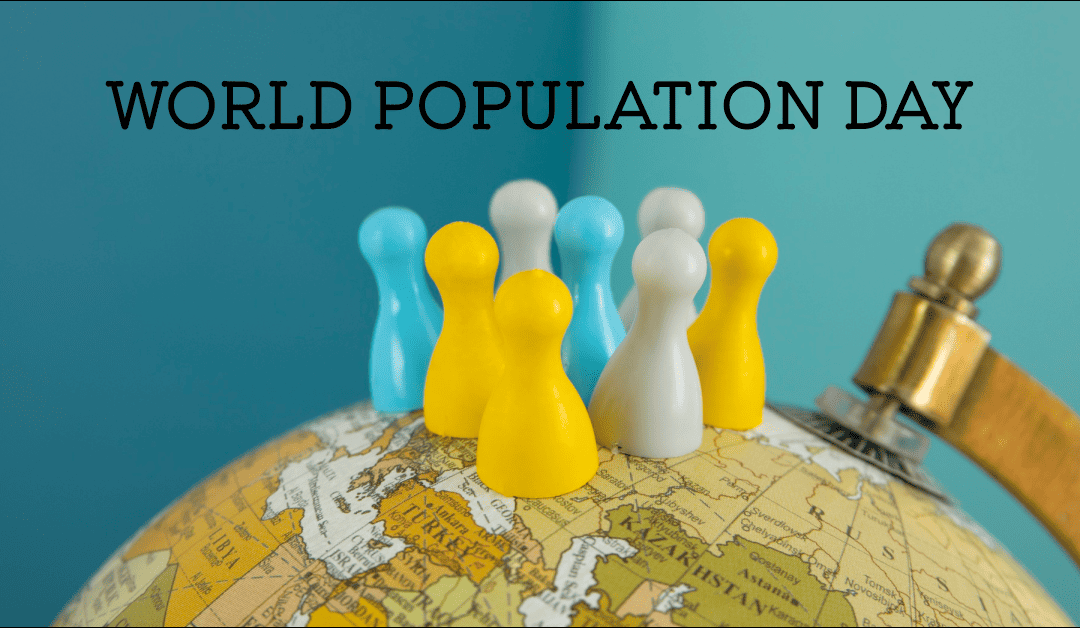Each year, on July 11th, people come together to commemorate World Population Day, shedding light on the diverse challenges and potential that arise from our global population. This occasion serves as a poignant reminder of our collective duty to foster sustainable development, guarantee fair access to vital services, and carve out a brighter path for all humanity. As we travel in a fast-changing world, addressing the significant concerns linked with population expansion and creating innovative solutions for harmonious coexistence becomes critical. On this World Population Day, let us explore the unique perspectives and actions required to build a sustainable future.
The global population is experiencing a rapid and steady expansion, projected to reach 9.7 billion individuals by 2050. While this growth can signify advancement and increased prospects, it also prompts us to address apprehensions regarding resource distribution, urban development, and ecological balance. It is imperative to grasp the intricate elements influencing population dynamics, including birth rates, life expectancy, and migration patterns. By comprehending these diverse aspects, we can develop tailored approaches to cater to various regions and communities’ unique needs.
Gender equality and reproductive rights are critical in determining the global population landscape. We must acknowledge the need to empower marginalized communities, especially women and girls, and “give voice to the voiceless,” which wonderfully expresses the need to guarantee equal chances and rights to all individuals, regardless of gender, race, or socioeconomic background. Women need appropriate education, healthcare, and family planning services to make informed decisions about their bodies and overall well-being. By providing comprehensive reproductive health services, we can minimize unplanned pregnancies, improve the health of both mothers and children and promote gender equality. Furthermore, when women are offered educational and economic prospects, we can anticipate positive outcomes in family planning, increased empowerment, and declining fertility rates.
Addressing the difficulties of population growth requires a focus on sustainable development. We can balance social, economic, and environmental elements by taking a holistic approach. Investing in renewable energy, sustainable agriculture, and effective urban design can all assist in minimizing the negative consequences of growing urbanization. Responsible consumption and production practices guarantee equitable resource distribution and waste minimization. Adopting technology and innovation can be critical in promoting sustainable development and ensuring a brighter future for everybody. Encouraging family planning methods and contraception is vital in curbing population growth. The adage “don’t put all your eggs in one basket” emphasizes the need to diversify our options.
Addressing the complexities of global population dynamics requires collective action and international cooperation. Governments, civil society organizations, and individuals must collaborate to develop comprehensive strategies for regional disparities and differing needs. Sharing guidelines, exchanging knowledge, and pooling resources are crucial in addressing poverty, inequality, and healthcare access. We can leverage the power of collective intelligence to effect long-term change by encouraging debate and collaboration.
Education and awareness lay the foundation for long-term development and informed decision-making. By imparting comprehensive knowledge about population issues, we can empower individuals to become advocates for change. Educational institutions, media outlets, and community organizations are vital in disseminating accurate information, debunking myths, and fostering discussions around population-related challenges. Equipping people with the necessary tools to critically analyze and address these issues is crucial for building a sustainable and inclusive world.
World Population Day serves as a reminder of the complex relationship between population dynamics and long-term development. It urges us to recognize the world’s rising population’s unique problems and opportunities. We can work towards a future that benefits both people and the earth by embracing innovation, empowering women, investing in sustainable development, supporting international collaboration, and prioritizing education and awareness. On World Population Day, let us commit to creating a more sustainable, egalitarian, and affluent world for future generations.




